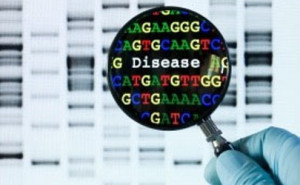Every hour of every day people around the world are living with and working to resolve food safety issues. Here is a sampling of current headlines for your consumption, brought to you today with the support of Alchemy Systems.
 We have the technology
We have the technology
Speed and cooperation combined with science can reduce the number of foodborne illnesses and save lives, according to a new report published by eurosurveillance.org.
Researchers reviewed the use of whole genome sequencing (WGS) to identify an international outbreak of Listeria monocytogenes infections. The cross-border outbreak of listeriosis caused by cold-smoked salmon was revealed by integrated surveillance and whole genome sequencing (WGS) by public health investigators in Denmark and France from 2015 to 2017.
The outbreak involved victims in Denmark, France and Germany, with victims in other countries possibly yet to be identified. At least one company in Poland is implicated as a supplier of the contaminated fish. A retail chain recalled the fish after being notified by government authorities.
“This report highlights that by the application of cross-disciplinary and real-time cross-border comparison of WGS data, L. monocytogenes infections can be prevented and thereby providing safer food for at-risk groups such as the elderly, immunodeficient individuals and pregnant women,” according to the researchers.
 Don’t play chicken with campylobacter
Don’t play chicken with campylobacter
The numbers are in for Denmark’s 2016 campylobacter infections and the pathogen continues to be the leading cause of foodborne illness in the country, with chicken remaining the most frequent vector.
As many as 55,000 Danes contract campylobacter infections annually, according to public health officials. However, many people do not seek medical attention for their symptoms and others are misdiagnosed. Consequently, the total number of confirmed campylobacter infections was 4,677 in 2016.
Chicken continues to be the most frequent source of campylobacter infections, with 46 percent of cases in 2016 traced to chicken. Cattle — meat, milk and/or direct contact — accounted for 19 percent, with imported chicken meat is liked to 9 percent of the infections. Contact with dogs and contaminated seawater accounted for 4 percent each.
“Previous source accounts have not established dogs or seawater sources as contributors of illness,” according to the research from the National Food Institute report to the Danish Veterinary and Food Administration.
Government and industry will use data from the report when designing the next Action Plan on Campylobacter. Thorough cooking kills campylobacter and other pathogens, but doneness cannot be determined without the use of a food thermometer.
 Explosion was huge relief
Explosion was huge relief
Another tourist has come forward with a tale of terror to tell about poisoning in paradise during a trip to Tunisia in 2014.
The case of African Salmonella infection involved a rare strain of the pathogen that is antibiotic resistant according to media reports out of England, Australia and New Zealand. Infection from the specific strain of Salmonella is confined to the genital area.
The tourist, David Worsley, is suing the tour operator TUI, alleging that a TUI representative told him he was merely suffering from sunstroke when he became ill at the Rui Marco Polo Hotel in Hammamet. Worsley says he had a high fever and was so sick he thought he was going to die.
“After the holiday, my testicle had swollen to the size of a grapefruit and it was so heavy it was like it was made of glass,” Worsley told British media.
“The pain was so bad I thought I was going to die. When it finally exploded I felt fantastic. It was such a relief.”
(To sign up for a free subscription to Food Safety News, click here.)

